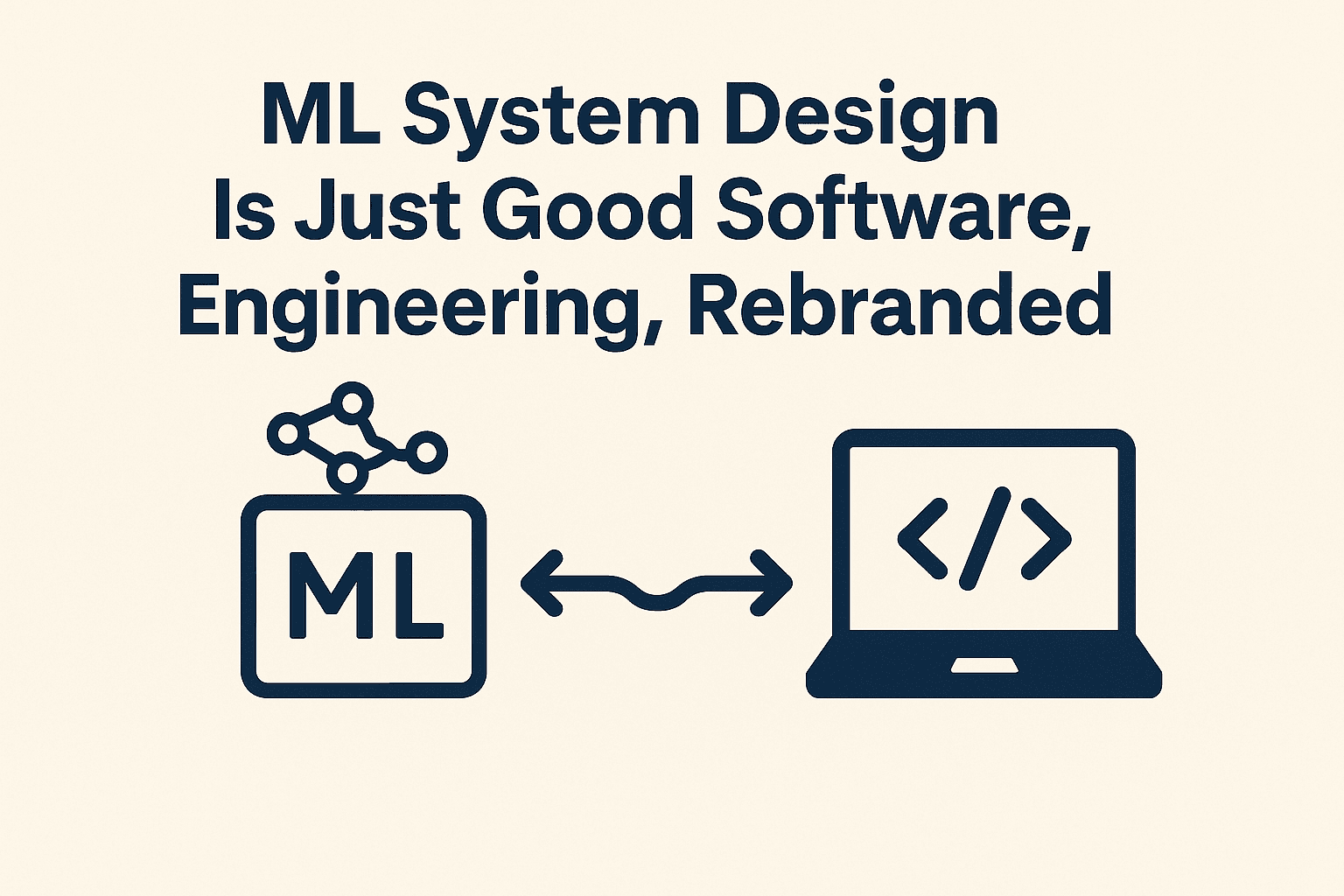ML System Design Is Just Good Software Engineering, Rebranded



There’s a lot of mystery around machine learning system design.
People treat it like this separate galaxy of diagrams, trade-offs, and unicorn complexity. But after years of working on ML systems at scale, I’ve come to a different conclusion:
ML system design is just good software engineering — with a few quirks.
It’s not magic. It’s not sacred. And it’s definitely not reserved for “ML engineers” only.
Let me break down what I mean — and why I think reframing it this way helps us all build better systems.
1. You’re Still Building Interfaces, Not Just Models
In software, we define interfaces that are:
- Predictable
- Testable
- Composable
In ML systems, your model is an interface — one that turns data into action. Inputs are features, outputs are scores or labels, and it should behave consistently even when the data gets weird.
This is why ML should not start with the model. It should start with the contract between the system and the user.
2. “Training” Is Just Build. “Serving” Is Just Deploy.
If you're a software engineer, you've already dealt with:
- Dev/test/prod environments
- CI/CD pipelines
- Rollbacks, alerts, failover
ML engineers call this "training-serving skew" or "deployment pain." But you already know the antidote: treat the pipeline like a product.
As Chip Huyen writes in Designing Machine Learning Systems:
“Serving is often treated as an afterthought, yet it is what makes ML models usable.”
The lesson? Production should be the goal from day zero — not something you retroactively try to stitch on.
3. Failure Modes Are Just Less Obvious
Software fails loudly. ML fails silently.
- No crash logs.
- Just weird predictions.
- Just subtle performance decay.
- Just a support team asking “why is this result suddenly off?”
ML observability isn't a bonus — it's a first-class requirement.
You don’t just need accuracy. You need visibility.
4. You Still Need to Design for Humans
Good software engineers think in terms of:
- Who uses this?
- What’s the happy path?
- How do we recover from failure?
In ML system design, the human angle becomes even more critical:
- Can your model explain its outputs?
- Is your confidence score usable?
- Are fallback rules defined?
ML without UX thinking becomes an unpredictable oracle.
ML with UX thinking becomes a guided tool.
5. Collaboration Is the Real System
The hardest part of building ML systems isn't the model — it’s the team dynamics:
- Who owns the pipeline?
- Who maintains the data contracts?
- Who is responsible when metrics drop?
You can’t design a reliable ML system in isolation. It requires cross-functional clarity:
- Data engineering
- Product management
- Infrastructure
- QA
- Legal (yes, even them)
Just like in large-scale software systems, ownership and alignment matter more than any single component.
6. Reusability Beats Reinvention
Good engineers write reusable libraries.
Good ML engineers write reusable data transforms, model evaluation metrics, and serving patterns.
One of the most underrated signs of maturity in ML system design is repetition with intention:
- Reusable model templates
- Common validation steps
- Shared inference clients
Copy-pasting notebooks isn’t engineering.
Designing testable, repeatable pipelines is.
7. Simplicity Wins
It’s tempting to over-engineer in ML:
- More features
- Deeper networks
- Complex ensembles
But most of the time, the gains are marginal. And the cost to maintain goes through the roof.
In real-world systems, the best design is the one that:
- Solves the problem
- Is understandable
- Is maintainable by someone other than you
Simplicity scales. Flash does not.
Final Thought
ML system design isn’t about adding complexity. It’s about applying the fundamentals of software engineering to a new class of problems.
Treat your models like services.
Treat your data like contracts.
Treat your pipelines like products.
And treat your users like collaborators.
If you're a software engineer: you're already 80% of the way there.
If you're an ML engineer: don't forget your roots — they’re the reason your models stay useful.
💬 If this post resonated with you, feel free to connect with me on LinkedIn or subscribe to my Substack for more thoughts on ML systems, tech, and learning in public.